 |
Home | Search | Browse | About IPO | Staff | Links |
 |
Home | Search | Browse | About IPO | Staff | Links |
|
The Big Jim image through a looking glass: Thompson's appointees 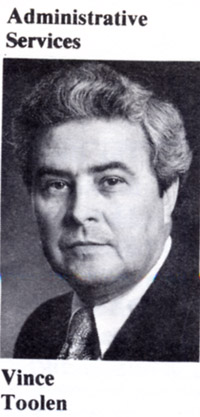
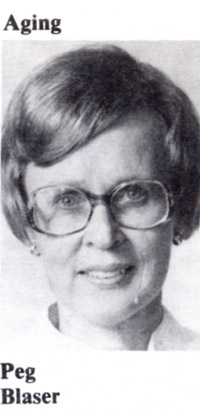
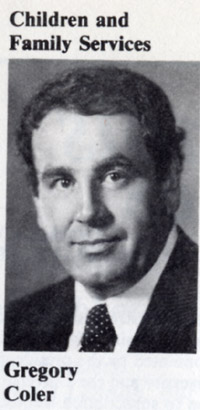
By AL MANNING The changeover rate has been high in the first four years of the Thompson administration. His style is not to rely on his cabinet for crucial decisions; that role he reserves for his senior staff in the Office of the Governor DURING his first four years as governor of Illinois, James R. Thompson has followed a consistent pattern in making appointments to important positions in state government. He has sought individuals of integrity and competence who project a good-government image. Few of the stereotyped cigar-chomping, back-room wheeler-dealers have found their way into government during Thompson's reign. He made good appointments, not exceptional or brilliant or extraordinary appointments; in some cases, he made very good appointments, and only rarely, bad. Early in his administration, the governor told columnist Neal Peirce: "I'm probably the oldest person on the staff. And there are some in their twenties and thirties, and they have strengths, enthusiasm, integrity, honesty, vitality, willingness to work hard, openness to new ideas. They also have weaknesses, inexperience, and sometimes they bump into each other and stumble over each other." The governor's two appointments in 1980 to constitutional executive offices symbolize the type of person he has recruited throughout his administration. Tyrone Fahner, 38, formerly associated with Thompson in the U.S. attorney's office in Chicago, was appointed attorney general to succeed William Scott. And Jim Edgar, 34, of Charleston, a former state representative working as the governor's legislative liaison, was named secretary of state to succeed Alan Dixon. Fahner and Edgar are both young, attractive, personable and intelligent. They have a reputation for honesty and they fit the Thompson mold. In preparation for a third gubernatorial campaign, Thompson has selected two running mates who possess many of the same characteristics which enabled him to win the governor's chair in the first place. As the U.S. attorney for the Northern District of Illinois, Thompson earned a reputation as a crime buster by prosecuting approximately 350 politicians, including former Gov. Otto Kerner. When Thompson was elected governor in 1976 at the age of 40, he was one of the younger governors in the history of the state. Initially, he drew upon his former start" oi" prosecutors to help him manage state government. Fahner was his first director of the Department of Law Enforcement. James Zagel started as the executive director of the Illinois Law Enforcement Commission and later moved to other key posts. Dan Kennelly, who had served as the liaison between the U.S. attorney's office and the Chicago Police Department, was appointed as the patronage chief. Gary Starkman became the legal counsel to the governor and William Schilling the director of operations. Charles Kocoras was named chairman of the Illinois Commerce Commission and Sam Skinner, who succeeded Thompson as U.S. attorney, was appointed chairman of the Capital Development Board. Safe appointments Faced with a unique two-year term of office — which meant he would govern less than one year before officially beginning a campaign for reelection — Thompson decided to make safe appointments of people who were unlikely to embarrass him prior to the second election. His predecessor, Dan Walker, practiced the politics of confrontation. For the most part, Walker appointed anti-establishment types to shake up government, individuals who would rattle the entire political structure. Thompson strongly resisted that type of administration, at least in part because it was unsuccessful under Walker. More than a dozen Walker appointees failed to be confirmed by the state Senate, and Walker was defeated in his bid to be renominated by the Democratic party. Thompson sought to establish a new tone in state government, and to do so he relied on numerous persons already experienced with the bureacracy. He retained Walker appointees Langhorne Bond at Transportation, Charles Rowe at Corrections and Leo Eisel at the Environmental Protection Agency. Dr. Robert deVito and Margaret Kennedy were promoted from within their departments to head Mental Health and Children and Family Services, respectively. Josephine Oblinger, Aging, and William Boys, Personnel, were both veterans of the Springfield scene. Compared to Walker's flamboyant cabinet recruited from out-of-state, Thompson's was low key and unexciting. It was not Thompson's style, though, to depend on his cabinet for advice on his most important decisions. That role has been reserved for his senior staff. Thompson's style, in fact, offers a sharp contrast to that employed by President Reagan when Reagan was governor of California. Reagan reportedly would convene his California cabinet two or three times per week for long discussions involving all facets of government. In four years Thompson convened his cabinet only three times. 4/February 1981/Illinois Issues 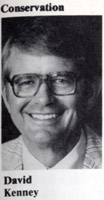


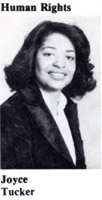
"Governor Reagan apparently assembled his cabinet often for all problems and issues," Thompson said before the election. "It's a collegial style of decisionmaking. I do not follow that style. The cabinet in Illinois is so large. When Reagan was governor I'm sure California did not have 23 departments." Thompson said he also uses the collegial style of decisionmaking, but with the senior staff. "Some decisions I make on my own, when I feel peculiarly qualified to do so," he said. "On a question of nuclear energy, for example, I would not. I need the staff. But on the Scott decision [when he appointed Fahner] I did that by myself. Sometimes I need to make a decision quickly and I follow my gut reaction." Concerning cabinet meetings, he said: "I started with the grand notion of inviting the press and the public to the cabinet meetings. I found everyone was afraid to talk. They were inhibited. The first one was boring. The second one was so boring the press did not come, so I quit having them." He did hold a third cabinet meeting in November 1980 to explain to the directors the financial restraints under which they will be operating during the next fiscal year. The press was not invited to attend. Front-office role Thompson's attitude toward the cabinet has resulted in some criticism. A few directors, for example, expressed a desire for more guidance and assistance in making decisions. Other students of state government have thought at times that Thompson is uninterested in the details of government. Paula Wolff, who serves on the governor's senior staff as program director, dismissed the criticism by saying the system has proven successful for Thompson. Instead of full cabinet meetings, there are four subcabinets which meet on a regular basis. "The governor gets the information he needs'' Wolff said. "He doesn't waste a lot of time on unimportant decisions. The departments run on their own."
With such a system, the governor's front-office staff has played an important role in many aspects of the administration. Soon after he was first elected, Thompson named his campaign manager, James Fletcher, as deputy governor. Although Thompson had recruited Fletcher for the campaign from the ranks of private law practice, his top aide had valuable experience in state government since he had served as parliamentarian for both the state Senate and House. The other initial key appointments included: Robert Mandeville, the former deputy comptroller for the state, as director of the Bureau of the Budget; Dave Gilbert, a reporter with the Chicago Tribune, as press secretary; and Zale Glauberman, a top aide with Republicans in the state legislature, as legislative liaison. Mandeville especially played a key role because he was hired to direct all state spending at a time which was considered financially critical by the governor. In addition, Thompson, through his political committee, Citizens for Thompson, retained a national political consultant, Doug Bailey, for public relations advice. The top staff was realigned in September 1979 when Fletcher returned to private law practice. The position of deputy governor was not filled. Instead, Thompson reached into his cabinet and named Arthur Quern as "director of government operations." Quern, a New York native aligned with Nelson Rockefeller, had served on the Domestic Council under President Ford before Thompson had appointed him director of the Illinois Department of Public Aid. Mandeville and Gilbert stayed on, but Bailey was not retained and Glauberman took another position in the administration as executive director of the Illinois Health Finance Authority, which was outside the political mainstream. A member of the legislature, Jim Edgar (now secretary of state) replaced Glauberman. At the same time, Robert Kjellander, who had become the patronage chief, and Greg Baise, the appointments secretary, assumed ever-increasing responsibility in the political arena. Also, Julian d'Esposito, a lawyer, quietly became an influential assistant on many of the day-to-day matters of state government. As deputy governor, Fletcher wielded considerable power. He was more experienced in state government than was Thompson, and it is believed he made a great many of the decisions. Although Quern assumed many of the duties handled by Fletcher, he does not play exactly the same role in the administration. One politico explained it this way: "With Fletcher, you would explain a problem and you were never sure if he made the decision or if Thompson made it. Quern says to everything: 'Let's take it to the governor.' " As Wolff pointed out, there has also been more of a focus on management since Quern switched to the governor's front-office staff. "There are quarterly reviews of the departments by Quern," she said, "and people are more concerned about management." February 1981/Illinois Issues/5 Remarkable turnover Despite Thompson's initial emphasis on stability in government, he has run through a remarkable number of appointees in some positions. Kennelly was obviously misplaced as the patronage chief. That position calls for someone familiar with Republican county chairmen, someone knowledgable about the various departments and agencies so job applicants can be directed to the appropriate vacancies. It was only a matter of months before Kennelly was appointed to the Illinois Toll Highway Authority and Mike Dunn was named to succeed him. The 24-year-old Dunn was fired, however, when it was disclosed he was using state aircraft improperly. Glauberman and James Helm oversaw the operation until Jim Clark, a veteran of the Ogilvie administration, was hired. But Clark was unable to handle the position to the satisfaction of those invovled. Not until Kjellander took over, did the office run smoothly. Then Kjellander was named to be Edgar's successor as legislative liaison, and" Baise got the patronage job. Thus, in four years, a normal term for a governor, Thompson had seven different people serve as patronage chief. In fact, few members of Thompson's cabinet completed four full years in office. And more changes were apparent as the governor was ready to be gin his fifth year. "It's a maturing administration," the chief executive said "Some persons leave for private industry. Some leave because they seek a new challenge. Some switch positions. Some will leave to join the Reagan administration. Some give a commitment to stay only so long, and they leave. And I must be comfortable with my cabinet. My ideas might change, so I change directors." Thompson just lost his agriculture director John Block to the Reagan cabinet and others may resign (see Names, p. 30).
Some of the changes in the Thompson administration were due to government reorganization. Reorganization was a theme of Thompson's first campaign, and a bipartisan commission recommended as he took office that the 23 code departments be reduced to 14. But accomplishments have been modest; Thompson did not follow the recommendation of drastic reorganization. In his first executive order on reorganization, the governor combined the departments of General Services and Finance into Administrative Services. He also merged the Illinois State Police with the Department of Law Enforcement and put the Illinois State Fair Agency under the jurisdiction of the Department of Agriculture. In perhaps his grandest reorganization move, die Department of Commerce and Community Development was created and assigned responsibilities formerly assumed by three now defunct agencies - the Department of Business and Economic Development, the Department of Local Government Affairs and the Governor's Office of Manpower and Human Development. The responsibilities of the Institute of Natural Resources were also increased. By executive order the governor transferred the Illinois Institute for Environmental Quality and the Division of Energy from the Department of Business and Economic Development to the Institute, and the legislature also assigned the state museum and three surveys — State Water Survey, Geological Survey and Natural History Survey — from the Department of Registration and Education to the Institute. After two tries and a lengthy legislative battle, the Fair Employment Practices Commission, the Department of Equal Employment Opportunity and the Human Relations Commission were consolidated into a new Department of Human Services. Thompson's latest order created the Department of Nuclear Safety. 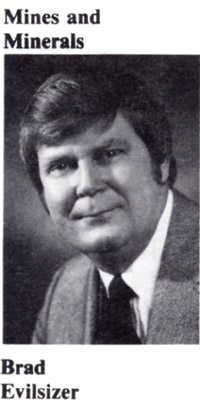
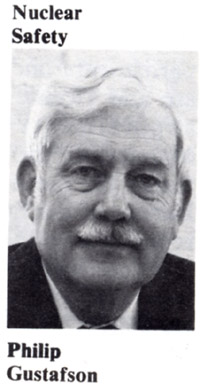
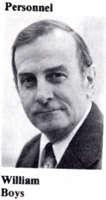
Reshuffling moves After four years, Thompson has reorganized, but the net result is still 23 code agencies. Of all the governor's moves within his administration, probably no appointment astounded Republican leaders as much as the governor's decision to name John Kramer as the secretary of Transportation. In 1979, when Bond left Springfield to accept the chairmanship of the Federal Aviation Administration, Thompson decided to name Bond's 28-year-old assistant as the secretary. Republican party activists, accustomed to a savvy politician holding the position, forced Thompson to delay the appointment. But Kramer, a specialist at obtaining federal funds in Washington, eventually won the job, and the favor of the GOP. Perhaps his most obvious political shuffle has been with John Castle, who first joined the Thompson administration as director of Local Government Affairs and then was hand-picked by Thompson to seek the Republican nomination for state comptroller. Castle lost in the 1978 general election, but Thompson took him back into the administration to eventually head the new and sometimes controversial Department of Commerce and Community Affairs. 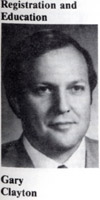
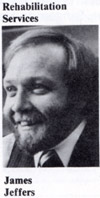
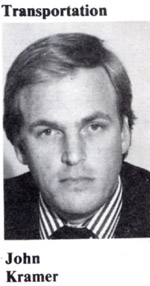
Thompson's record with minority appointments is better than previous governors. He appointed three women to his initial cabinet — Oblinger at Aging, Kennedy at Children and Family Services and Joan Anderson at Registration and Education — more than were ever appointed in previous administrations. And Ann Lousin was named chairman of the Civil Service Commission. But they by no means played a key role in his administration, and now he has only two female directors. Paula Wolff is a key member of his office advisers, and liana Rovner, a lawyer from the U.S. attorney's office, is a top deputy on the Chicago staff. But the First Lady, Jayne Thompson, clearly has no female rival when it comes to influence in the administration. The governor also appointed only one black, Donald Duster, to the original cabinet to head the now defunct Department of Business and Economic Development. The second black, Joyce Tucker, was appointed last summer to head the new Department on Human Rights long after Duster had returned to private industry. Thompson's record on appointments to regulatory agencies is not entirely clear because, unlike some other states, the agencies are low profile. But questions were raised, for example, when the new attorney general, Fahner, announced the creation of a special unit in his office to intervene on behalf of consumers in utility rate hike cases pending before the Illinois Commerce Commission. Members of the commerce commission are also appointed by the governor. The current chairman is Michael V. Hasten. 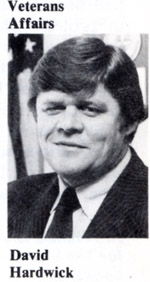
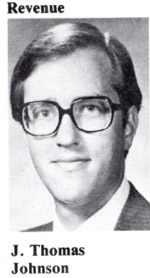
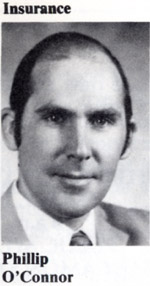
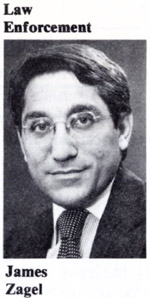

February 1981/Illinois Issues/7 Most of Thompson's appointees have been native Illinoisans, but a few New Yorkers have been imported. In addition to New Yorker Quern, the governor recruited another New Yorker, Paul Simmons, who has experience in Washington, to be his speech writer. When problems arose at Children and Family Services, he tapped another New Yorker, Gregory Coler, for the directorship. Another out-of-stater is Robert Goss, who was employed at the U.S. Department of Transportation and the National Governor's Conference. He was hired as the director of the Governor's Office of Manpower and Human Development when L.W. "Bill" Murray was fired. As difficulties arose elsewhere, Thompson was able to ease directors out of their offices without much controversy. Charles Rowe was replaced at Corrections by a front-office assistant, Gayle Franzen. At Public Health, Paul Peterson was replaced by a legislator, William Kempiners. When Joan Anderson had a problem at Registration and Education the governor shuffled her off to the Pollution Control Board and named James Nowlan as the acting director. Actually, Nowlan served as director of the department on two separate occasions. The former legislator was named acting director at the beginning of the administration, and after Anderson took Registration and Education, Nowlan was Thompson's special assistant for education. He was back teaching at the University of Illinois (after a stint in the John B. Anderson campaign) when recruited to serve again as acting director upon Anderson's departure. From time to time some of the scores of boards and commissions have caused unfavorable publicity. Ironically, the Illinois Racing Board, which had figured so centrally in Thompson's prosecution of Kerner, was one of the first boards to have a flap. Some of the members claimed unfair racing dates had been arranged, and they resigned in protest. The governor must have winced as he read those headlines, since his most celebrated courtroom case involved Kerner's conviction for accepting a bribe for racing dates. But without question, former prosecutor Thompson has chosen his aides well. His first four years in office were scandal-free, a rarity in Illinois politics. Al Manning is a political columnist for The State Journal-Register, Springfield. February 1981/Illinois Issues/8 |
|
|